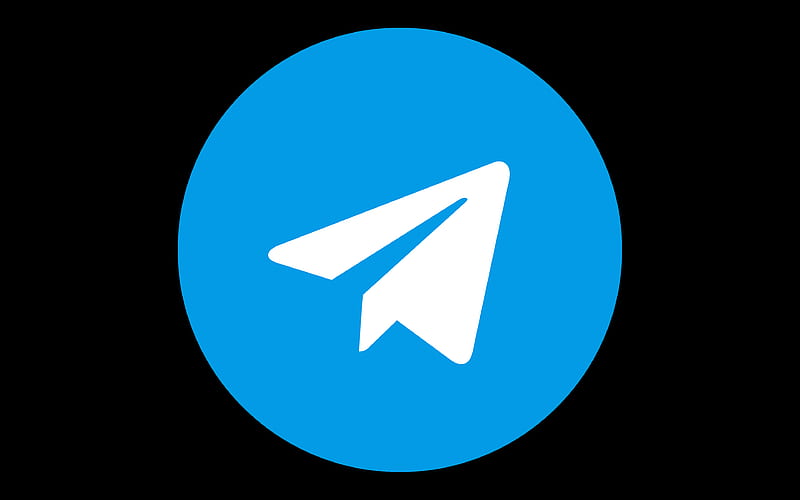Telegram: The Ultimate Guide to the World’s Most Secure and Powerful Messaging App
Introduction
In a world dominated by instant communication, the need for secure, fast, and reliable messaging apps has never been greater. Among the many platforms competing for user attention — such as WhatsApp, Messenger, and Signal — Telegram stands out as a true powerhouse.
Known for its privacy, speed, open-source technology, and unique features, Telegram has evolved from a simple chat app into a global communication ecosystem that serves individuals, businesses, developers, and communities.
This article explores everything about Telegram — from its creation and principles to its advanced functions, business potential, and future innovations.
1. The Origin and History of Telegram
1.1 Founding Story
Telegram was founded in 2013 by Pavel Durov and his brother Nikolai Durov, both Russian entrepreneurs and developers. Before Telegram, Pavel Durov was known as the creator of VKontakte (VK), the largest social network in Russia — often referred to as “Russia’s Facebook.”
The Durov brothers left VK in 2014 after refusing to share user data with the Russian government. They then focused entirely on Telegram, driven by the vision of creating a secure, independent communication platform free from government control.
1.2 Growth and Popularity
Telegram’s growth was fueled by its strong stance on privacy and innovative features. By 2015, it had over 100 million users. As of 2025, Telegram boasts over 900 million monthly active users across 150+ countries.
Its rise has been especially strong in countries where internet censorship or surveillance is common, such as Iran, India, Brazil, and Russia.
2. Telegram’s Core Features
Telegram offers far more than simple messaging. Its ecosystem is a combination of social media, file sharing, broadcasting, automation, and business tools.
2.1 Instant Messaging
Telegram’s basic function is cloud-based messaging, which allows users to:
Send text messages, photos, videos, and documents.
Create groups and channels.
Use emojis, stickers, and GIFs.
Edit and delete messages anytime.
Unlike WhatsApp, Telegram doesn’t store chats only on one device — everything is synced across phones, tablets, and PCs simultaneously.
2.2 Secret Chats
Secret Chats are Telegram’s most secure communication feature.
They use end-to-end encryption, meaning only the sender and receiver can read the messages. Even Telegram’s servers cannot access them.
Secret Chats also include:
Self-destruct timers for messages.
No cloud backup (not stored on Telegram’s servers).
Screenshot protection (notifications if captured).
2.3 Groups
Telegram Groups can hold up to 200,000 members, making them ideal for communities, organizations, and public discussions. Admins can manage roles, permissions, bots, and polls.
2.4 Channels
Unlike groups, Channels are broadcasting tools where only admins can post. They can have unlimited subscribers and are used by influencers, news outlets, businesses, and even governments to share updates.
2.5 File Sharing
Telegram allows users to share any file type (PDF, ZIP, MP3, MP4, etc.) up to 2GB per file. This is a major advantage over competitors like WhatsApp and Messenger, which limit file sizes.
3. Telegram’s Privacy and Security Philosophy
3.1 The Durov Philosophy
Pavel Durov has repeatedly emphasized that “privacy is not for sale, and human rights should not be compromised out of fear or greed.”
Telegram does not sell user data, does not show ads (as of 2025, except optional sponsored messages), and is independent of governments.
3.2 Encryption and Cloud Technology
Telegram uses a combination of:
MTProto protocol (developed by Nikolai Durov)
Client-server/server-client encryption for cloud chats
End-to-end encryption for secret chats
This hybrid model allows users to enjoy both security and accessibility across multiple devices.
3.3 No Ads or Tracking
Telegram does not use personalized advertising or data tracking like Facebook or Google. Even when it introduced ads in 2022, they were non-targeted and privacy-friendly.
4. Telegram Bots and Automation
4.1 What Are Bots?
Telegram Bots are automated accounts created by developers to perform specific tasks. They can:
Send reminders
Provide news updates
Handle payments
Play games
Manage groups and channels
Example bots:
@ImageBot – finds and shares images.
@VoteBot – creates polls.
@Filetobot – manages file storage.
@QuizBot – lets users create and play quizzes.
4.2 Business Applications
Companies use bots for:
Customer support
Product catalogs
Automated marketing
News delivery
Payment processing
Telegram’s Bot API allows developers to create powerful and interactive tools, often replacing websites or apps.
5. Telegram Premium
In June 2022, Telegram launched Telegram Premium, a paid subscription for users who want advanced features.
5.1 Premium Features Include:
Upload files up to 4GB
Faster download speeds
Voice-to-text transcription
No ads
Profile badges
Exclusive stickers and reactions
Double limits (for channels, folders, and pinned chats)
5.2 Why Premium Matters
Premium subscriptions help Telegram stay financially independent, as the company refuses to sell user data or rely on investors who might influence its policies.
6. Telegram for Businesses and Marketing
Telegram is not only a messaging app but also a powerful marketing and business tool.
6.1 Telegram Channels for Branding
Businesses use Channels to broadcast updates, promotions, and news. Channels provide:
Direct access to an audience.
Instant notifications.
Engagement through polls and reactions.
Example:
A clothing store can post product photos and updates directly to followers without relying on social media algorithms.
6.2 Community Engagement through Groups
Brands and creators can use Groups to build fan communities, gather feedback, and hold live discussions. Admin tools allow easy moderation.
6.3 Telegram Ads
Telegram offers Sponsored Messages, a form of advertising that appears in public channels with over 1,000 subscribers. These are non-intrusive, text-based ads that respect user privacy.
6.4 E-commerce and Payments
Telegram’s Payment API allows businesses to sell directly through bots or channels. Users can order, pay, and receive receipts — all within Telegram.
7. Telegram vs. Other Messaging Apps
7.1 Telegram vs. WhatsApp
7.2 Telegram vs. Signal
Signal focuses entirely on privacy, while Telegram balances privacy, speed, and usability. Signal lacks Telegram’s cloud features and group tools, making Telegram more practical for large communities.
8. Customization and User Experience
Telegram allows users to personalize their experience extensively.
8.1 Themes and Layouts
Users can choose light/dark modes.
Create custom themes with colors and backgrounds.
Add animated backgrounds.
8.2 Folders and Search
Organize chats into folders (Work, Family, News, etc.).
Use powerful search tools to find old messages or media quickly.
8.3 Reactions and Emojis
Telegram offers animated emojis, stickers, and reactions — making communication expressive and fun.
9. The Role of Telegram in Society and Politics
9.1 Freedom of Speech
Telegram is often used in countries where censorship exists. Activists, journalists, and citizens use it to share information safely.
9.2 Political Movements
Telegram has played a role in major events, such as:
Ukraine war (2022–2025)
It provides a safe space for communication and independent news updates.
9.3 Education and Learning
Teachers, students, and educational channels use Telegram for learning materials, online classes, and group projects.
10. Technical Innovations Behind Telegram
10.1 MTProto Protocol
MTProto is Telegram’s proprietary encryption technology designed to provide speed, reliability, and security. It ensures:
Data is encrypted between client and server.
Messages are stored safely in the cloud.
10.2 Cloud Infrastructure
Telegram operates through distributed servers worldwide, ensuring high speed and reliability even during internet restrictions or heavy traffic.
10.3 Open Source and Transparency
Telegram’s client apps (Android, iOS, desktop) are open-source, meaning anyone can review the code. This transparency builds trust and allows developers to contribute.
11. Telegram’s File Storage and Media Sharing
Telegram can act as a personal cloud storage system.
Users can create a private “Saved Messages” chat to store files, photos, or notes.
With no compression on photos or videos, Telegram is ideal for photographers, journalists, and designers.
12. Safety and Moderation
12.1 Spam Protection
Telegram uses AI to detect spam and limit bots that send unsolicited messages.
12.2 Reporting Tools
Users can report abuse, fake accounts, and illegal content. Telegram employs moderators and volunteers worldwide to ensure compliance with community rules.
12.3 Children’s Safety
Telegram includes content filters and parental control options to block adult content in public channels.
13. Monetization Opportunities
Telegram provides multiple ways for creators and businesses to earn income:
Paid channels (subscription access)
Affiliate marketing through links
Premium memberships
Selling courses or digital products
Telegram Ads revenue share (coming soon)
Influencers, educators, and entrepreneurs can build entire ecosystems around Telegram communities.
14. Telegram in the Future
14.1 Web3 and Blockchain Integration
Telegram is exploring connections with TON (The Open Network) — a blockchain project originally started by Telegram. TON enables crypto payments and decentralized apps.
14.2 Telegram Wallet
Telegram Wallet allows users to send and receive cryptocurrency (TON coin) directly within chats — marking the start of Telegram’s Web3 vision.
14.3 Expansion as a Super App
Telegram aims to become more than a messaging app — a “Super App” combining messaging, finance, entertainment, and commerce in one ecosystem.
15. Criticism and Challenges
Despite its success, Telegram faces challenges:
Misinformation: Some channels spread fake news or extremist content.
Government bans: Countries like Iran and China have blocked Telegram due to its independence.
Data concerns: While secure, Telegram’s default chats are not end-to-end encrypted.
However, Telegram continues to evolve and strengthen its moderation tools and global infrastructure.
Conclusion
Telegram is more than a messaging app — it’s a revolution in communication. Built on the principles of freedom, security, and innovation, Telegram empowers users to connect without compromise.
From private conversations to massive public communities, Telegram bridges individuals, businesses, and developers in one powerful, privacy-respecting network.
As digital life becomes more connected — and surveillance more common — Telegram’s mission remains vital: to ensure freedom of communication for everyone, everywhere.
1. General Telegram Hashtags
-
#Telegram
-
#TelegramChannel
-
#TelegramGroup
-
#TelegramCommunity
-
#TelegramChat
-
#TelegramLife
2. Growth & Engagement Hashtags
-
#JoinOurChannel
-
#SubscribeNow
-
#TelegramUpdates
-
#StayConnected
-
#CommunityGrowth
-
#TelegramFans
3. Niche & Content Hashtags
News & Information: #NewsOnTelegram, #DailyUpdates, #BreakingNews
Education & Learning: #LearnOnTelegram, #EducationCommunity, #KnowledgeShare
Entertainment & Fun: #FunnyTelegram, #Entertainment, #MemeChannel
Tech & Crypto: #TechNews, #CryptoTelegram, #BlockchainCommunity
Lifestyle & Fitness: #LifestyleTips, #HealthOnTelegram, #FitnessChannel
4. Promotion & Discovery Hashtags
-
#TelegramPromo
-
#TelegramMarketing
-
#BestTelegramChannel
-
#TopTelegramGroups
-
#DiscoverTelegram
5. Security & Privacy Hashtags
-
#SecureChat
-
#PrivacyMatters
-
#SafeMessaging







No comments:
Post a Comment